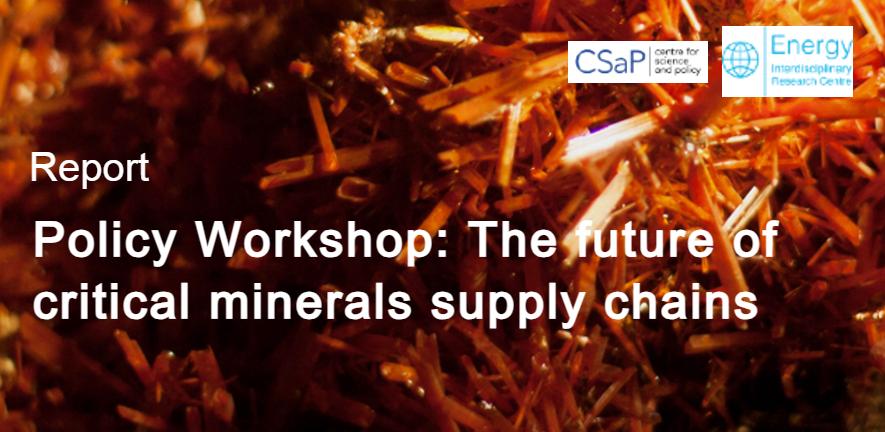
As technology evolves rapidly and the transition to clean energy accelerates, the world is increasingly relying on critical minerals (CM) for the future: lithium, cobalt, and graphite are needed for electric car batteries; silicon and tin for electronics; and rare earth elements for electric cars and wind turbines. Consequently, the demand for these minerals is expected to rise sharply, necessitating the development of resilient, diverse, and responsible value chains.
The report following the workshop organised by the Centre for Science and Policy (CSaP), in partnership with the Energy Interdisciplinary Research Centre and the Department for Business and Trade (DBT) is now available. The event brought together stakeholders from academia, policy, and industry for a roundtable discussion under the Chatham House rule.
Purpose of the workshop
The workshop aimed to explore potential solutions and leverage points, and to pinpoint the UK's capabilities to inform the government's rapidly evolving Critical Minerals Strategy.
The key questions addressed during the Policy Workshop were:
- What does existing evidence tell us about the footprint of mining (including refining and processing), including the impact on biodiversity? How do/could we measure the biodiversity impacts of mining and what are the challenges?
- What are the other key risks (current and anticipated) associated with the future of critical minerals supply chains and potential adverse impacts of mining?
- Where do evidence gaps lie regarding risks and impacts and what further research is needed in this space?
- What are the challenges and possibilities of moving towards buying sustainable critical minerals?
The report covers the Policy Perspective, it identifies the Key Challenges and Key Solutions Proposed,
Image credit: Mineral by be▲-t - creative commons

